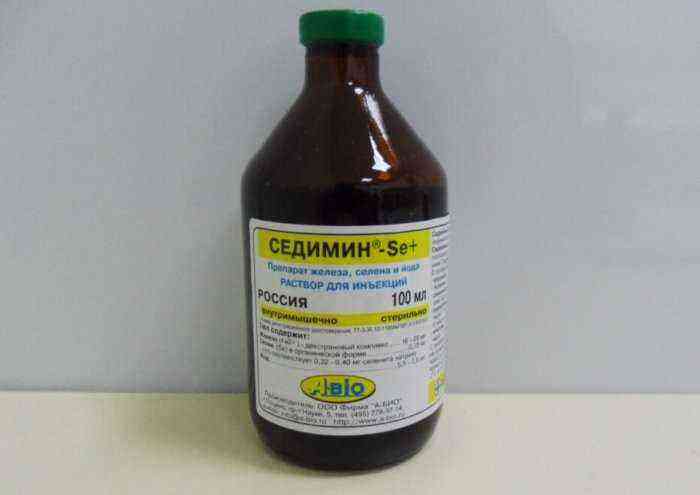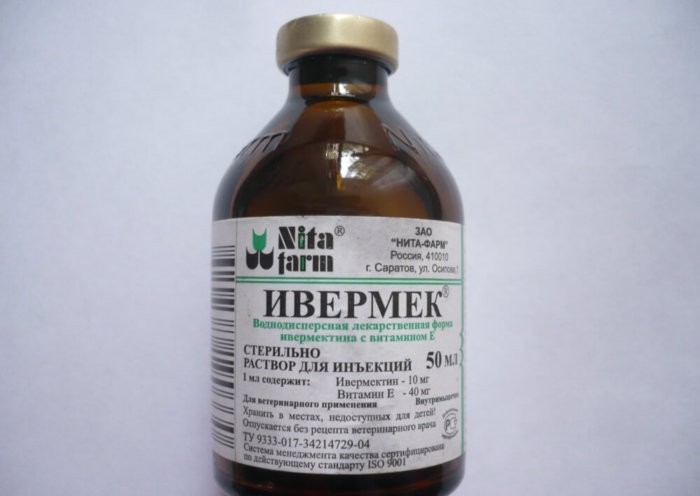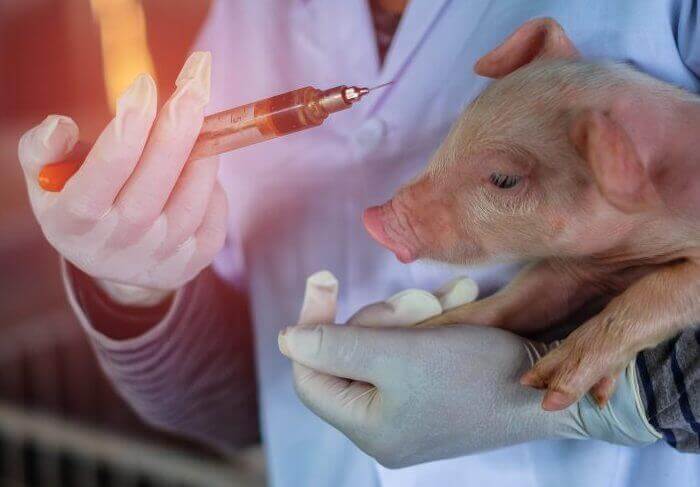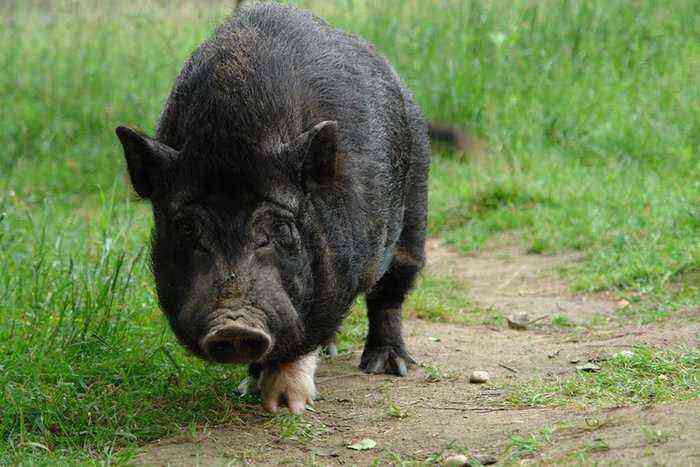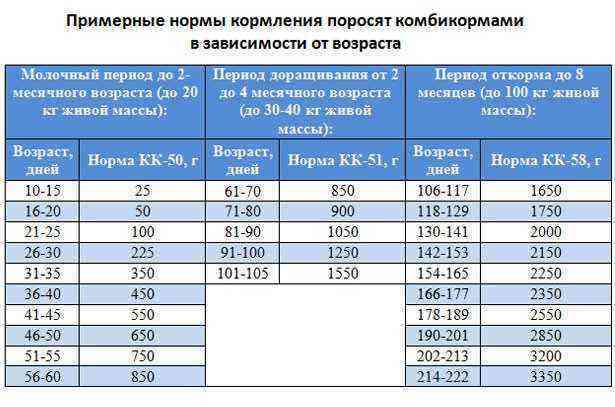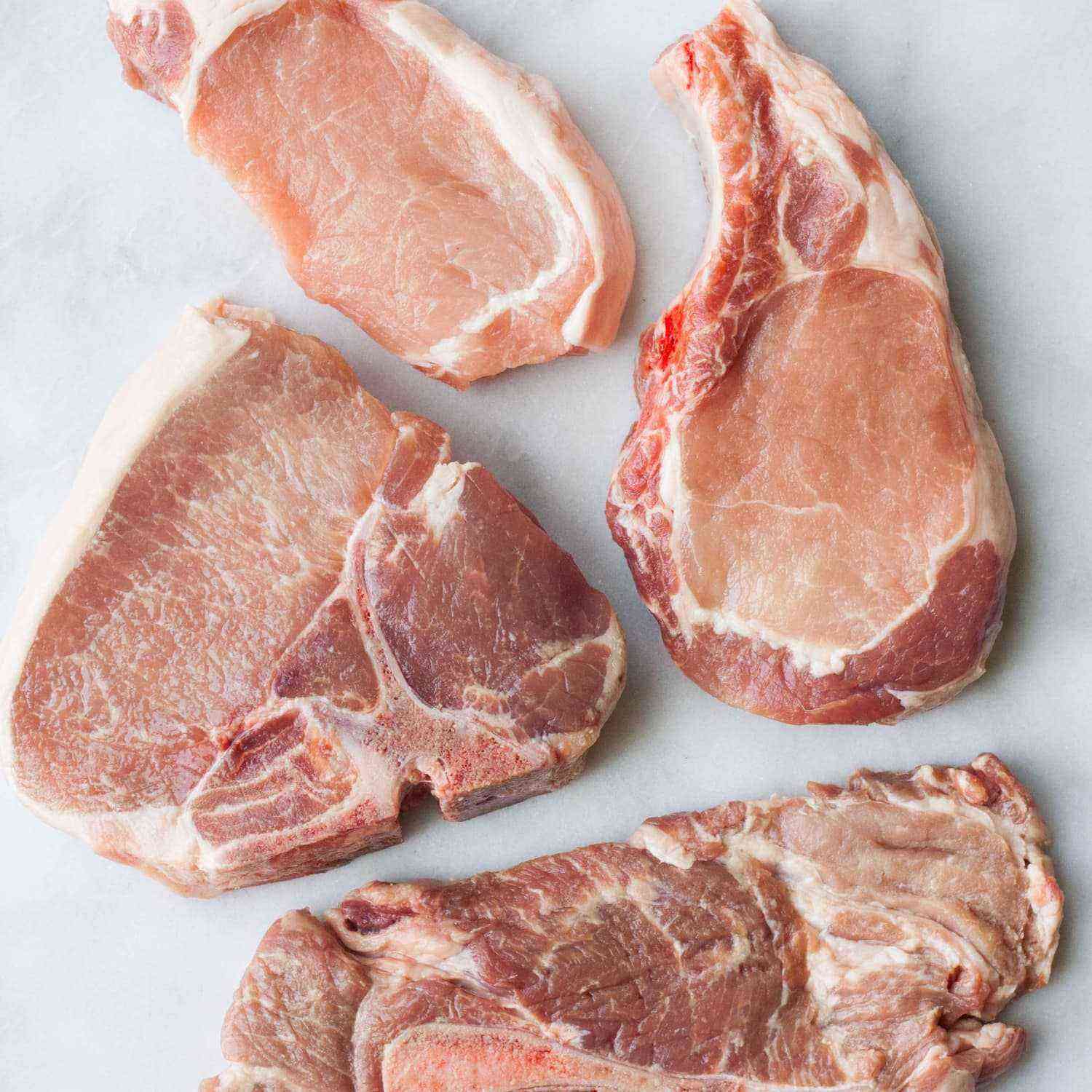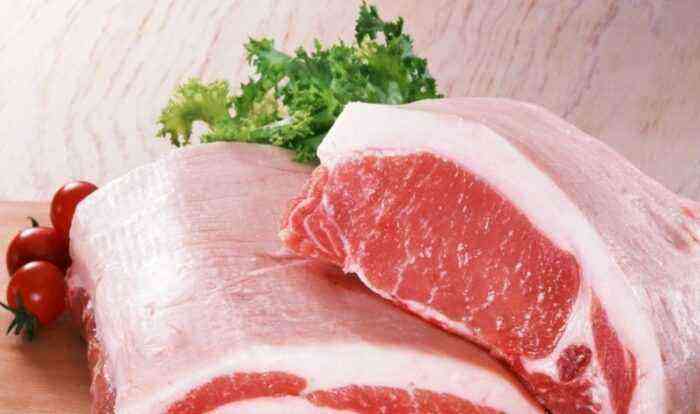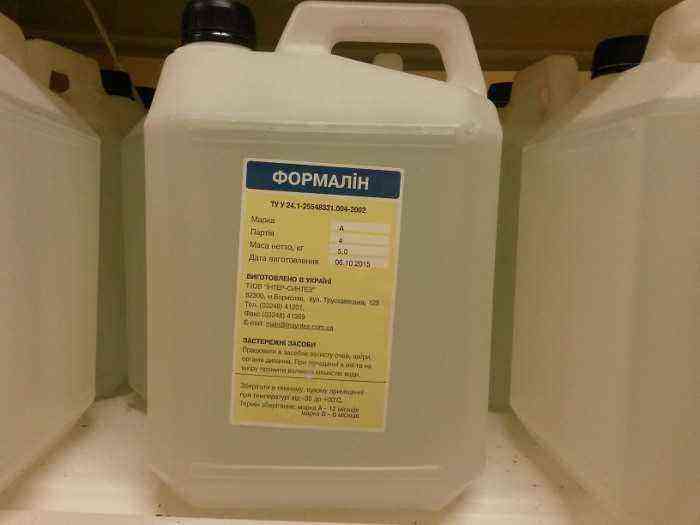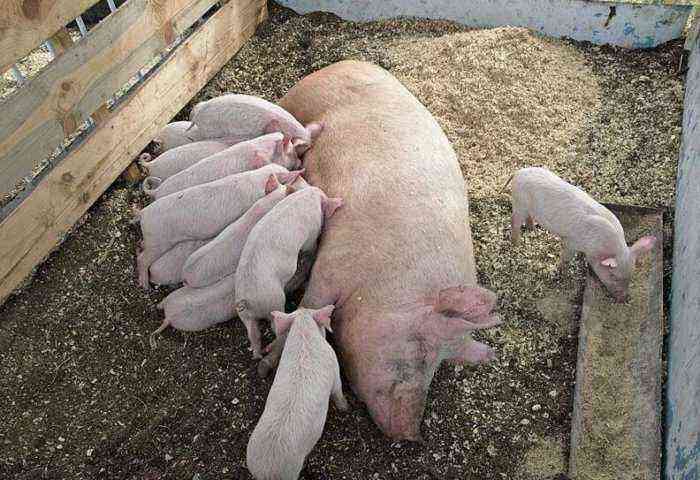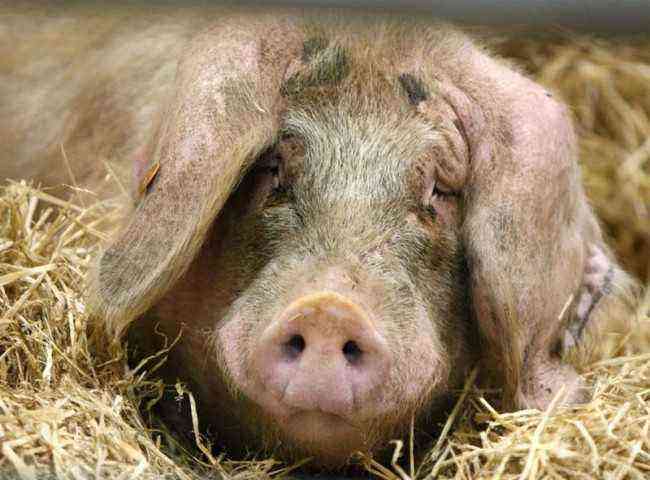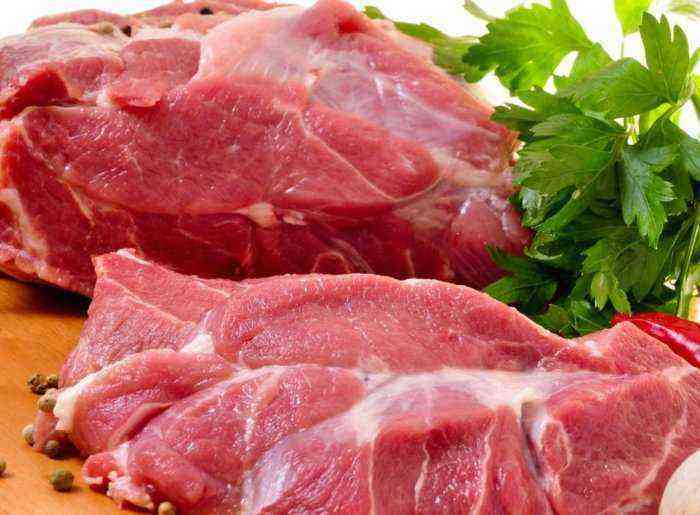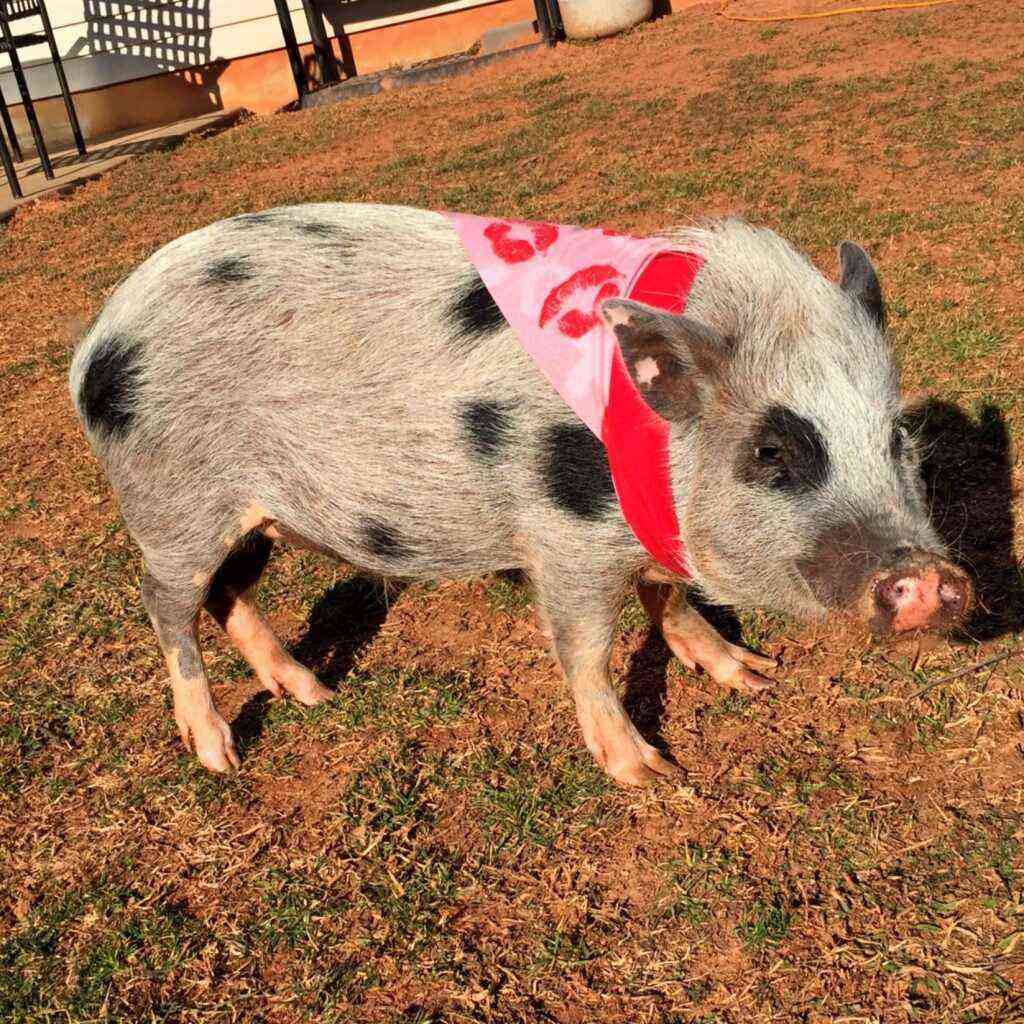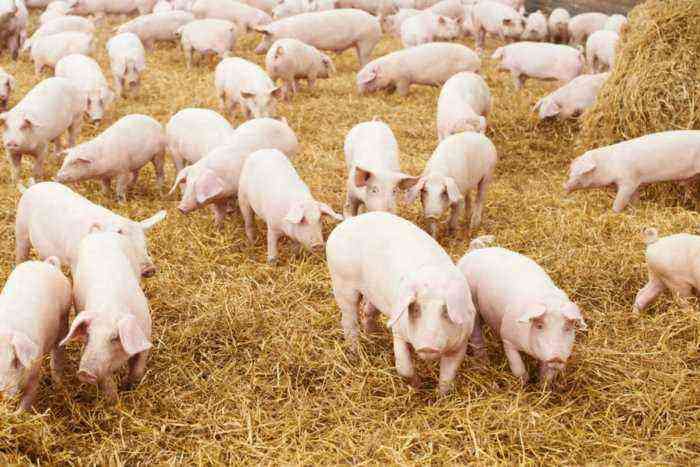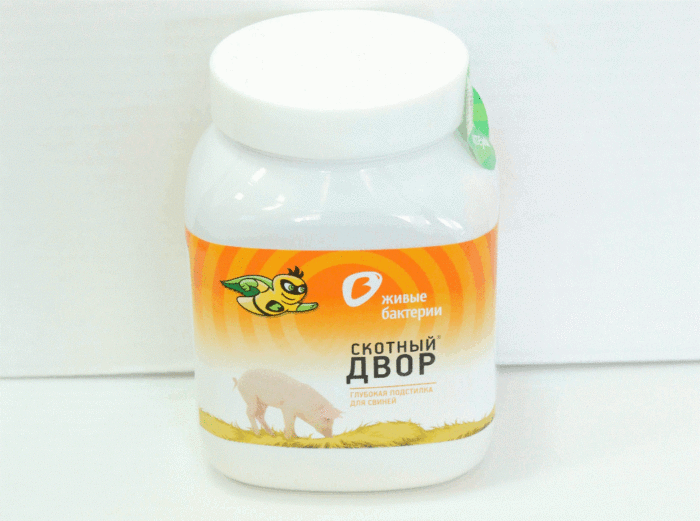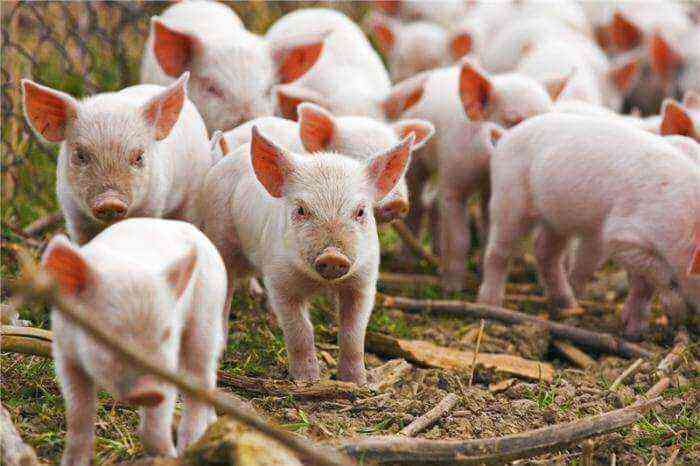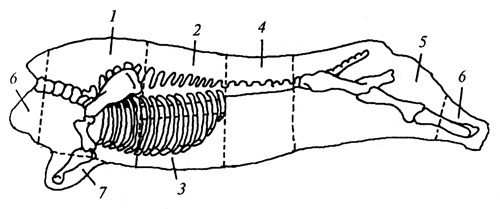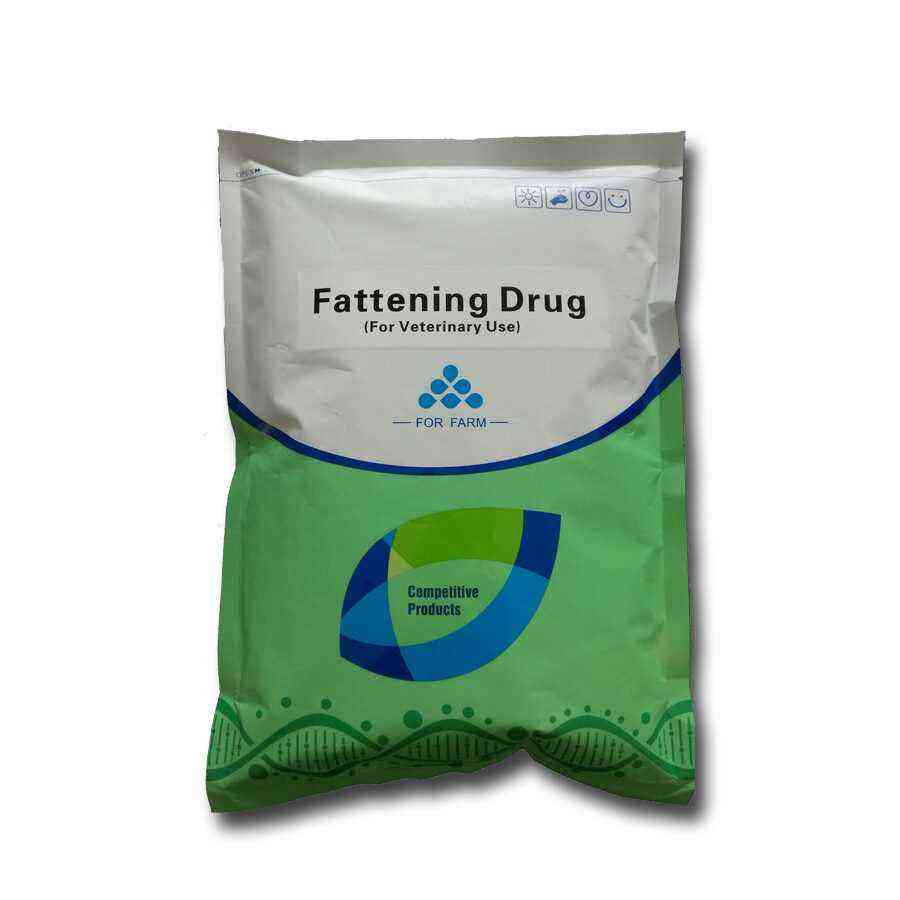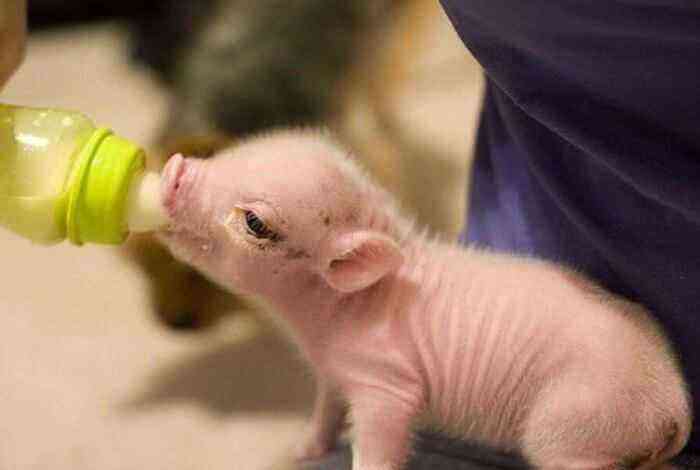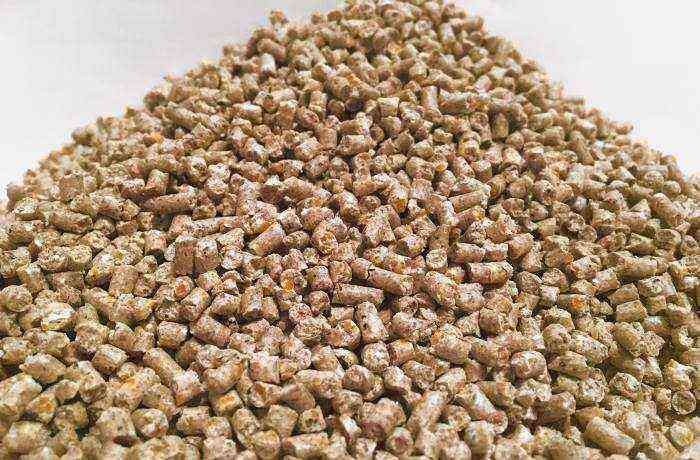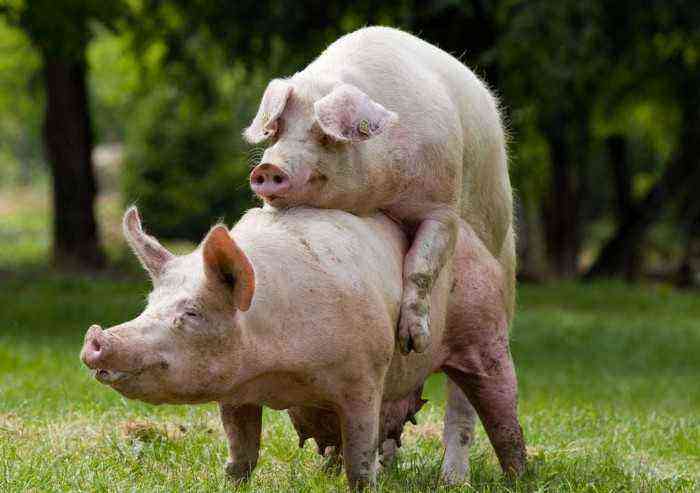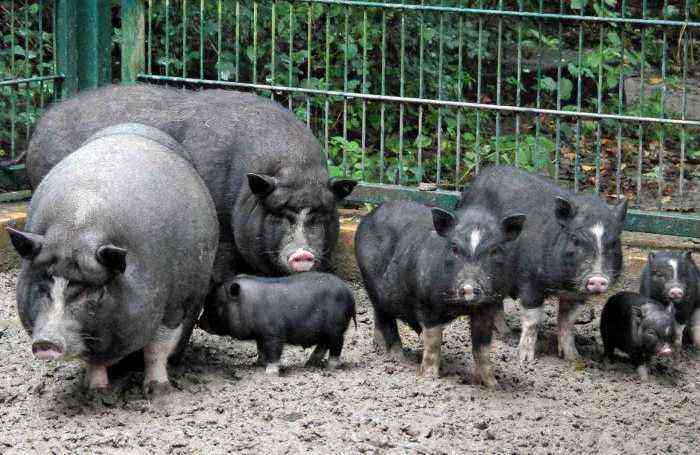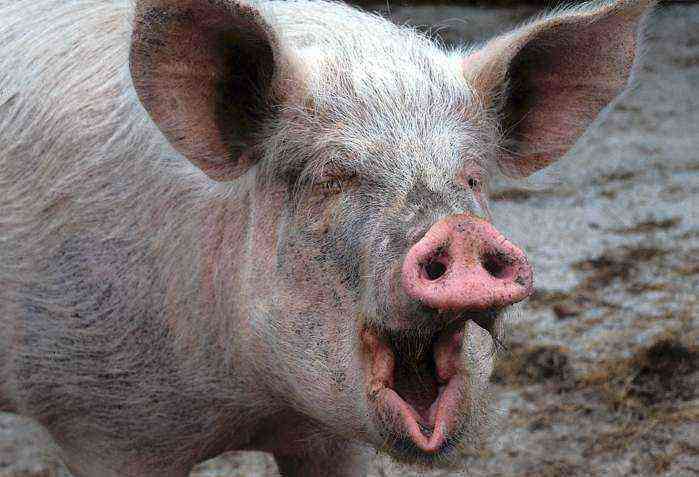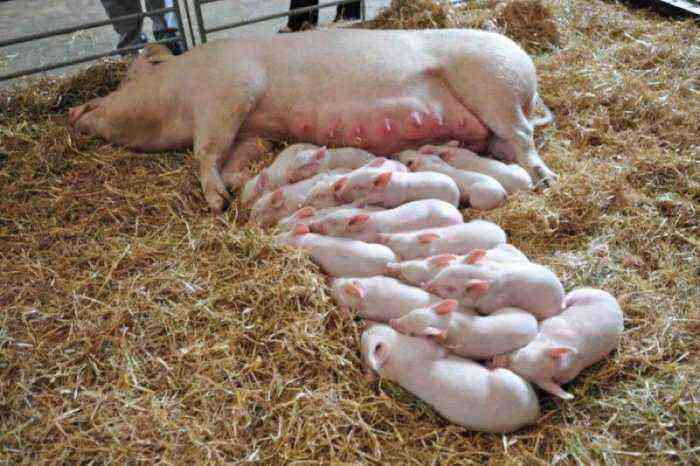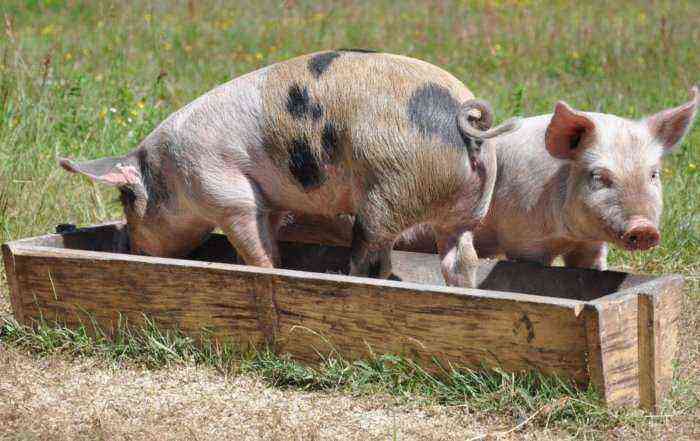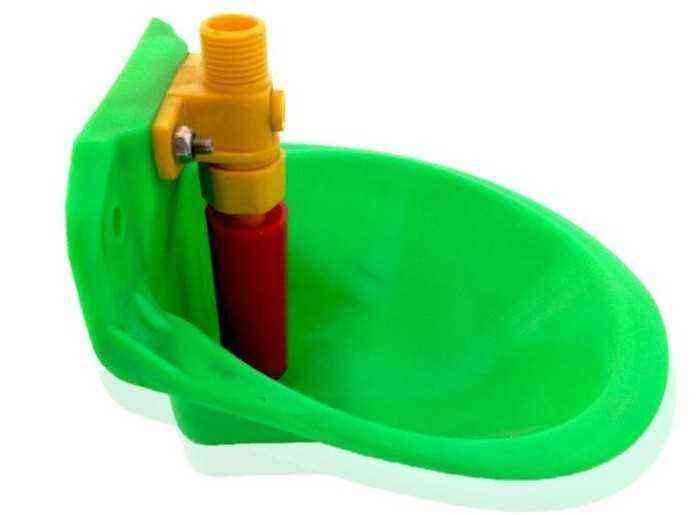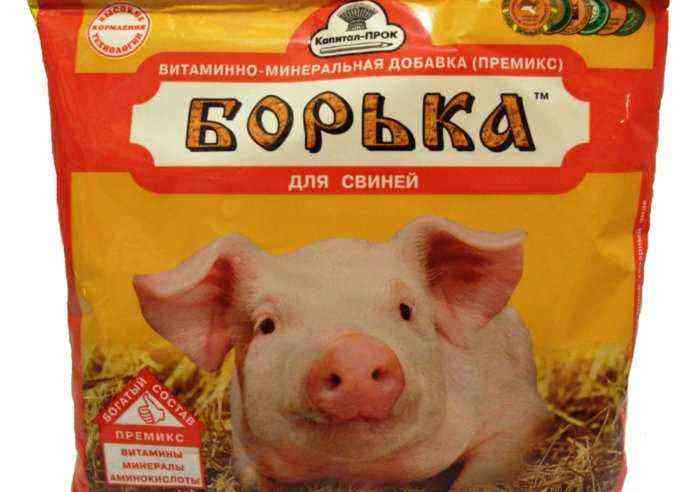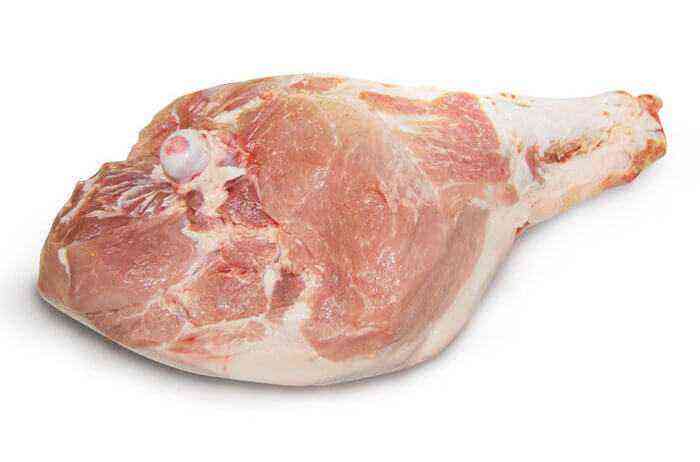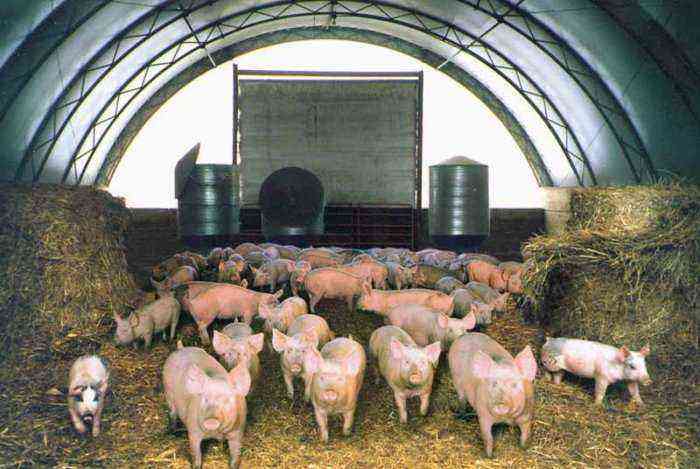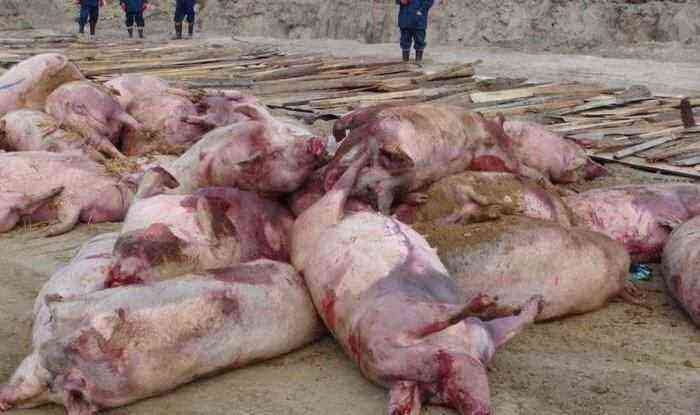In newborn piglets, the body contains very little iron, and if its amount is not replenished in a timely manner, the risk of anemia and developmental delay in the animal increases significantly. But since there is practically no such element in the mother’s colostrum, the breeder often has to independently pierce with iron-containing preparations. In this case, it is important to know what means are used and how to properly inject.
Piglet on the run
What vaccinations should be given to newborn piglets?
Vaccination of young pigs is carried out from the first days of their life. And the best option in this situation would be to consult a veterinarian about what vaccinations are best for an animal.
To avoid iron deficiency in the body, the first injection of iron-containing preparations is carried out as soon as the baby is 3 days old. For this, as a rule, Ferroglucan is used. Young animals are pierced with them for three days, while the dosage is 2 ml. The drug is injected behind the piglet’s ear, and the best time for such an injection will be in the morning.
Ferranimal is often used instead of this remedy. The drug in its composition does not differ from Ferroglucan, therefore, the dosages and recommendations for use are the same.
An effective way to prevent anemia in young animals is to administer Iron Dextran. It is used from the 4th day of the baby’s life. It is administered intramuscularly or subcutaneously, while the dosage is from 100 to 200 mg per individual (depending on weight and health status).
In addition to the declared funds, to restore the need for iron in pigs, the following are often used:
- Suiferrovit. The medicine is administered subcutaneously. One dose is not more than 5 ml.
- Ferrous sulfate heptahydrate. Such a drug is diluted to the state of a thin paste and injected intramuscularly into the baby 3 times with a pause of 5 days.
- Ursoferran. It also acts as a preventive measure. It is administered intramuscularly at a dose of 1,5 ml.
- Sedimin. The volume of one injection should not exceed 1 ml. When it is administered, it is forbidden to mix the drug with other drugs or administer to the baby if some drug (especially antibiotics) has already been introduced before.
Sedimin
A good result also gives a mixture of iron and copper sulphates, which are administered orally to animals. To do this, 1 g of iron and about 15 g of copper are diluted in a container with 1,5 liter of clean boiled water. The resulting remedy is soldered to babies one teaspoon per day. The procedure is implemented up to the 21st day of the piglet’s life.
Pig vaccination plan
It is worth noting that in the first months of a piglet’s life, the foundation for the health and productivity of an adult is laid. That is why, in addition to iron, other prophylactic agents are also introduced into the body. Such vaccination is carried out in accordance with a special plan, which includes the following drugs:
- Vitamin and mineral complexes. Tetravit or trivit is administered into the body as an injection with a dosage of 1 drop per individual. Tricalcium phosphate is added to food in an amount depending on the weight and age of the baby. Aminovital is added to water.
- Vaccination against salmonellosis and pasteurellosis. The procedure is implemented at the end of the first month of the piglet’s life. For this, specialized vaccines are used, which are administered in 2 ml doses twice with an interval of 5-7 days.
- Swine fever vaccine. Implemented at the age of 1,5 months. Before administration, the agent is diluted with saline.
- Vaccine against swine erysipelas. A special preparation in liquid form is used in 2-2,5 months from the birth of the baby. The agent is injected in a volume of 0,3 ml. After 2 weeks, a second injection is carried out already at a dosage of 0,5 ml. If dry vaccine BP-2 is used, then re-introduction is carried out 30 days after the first injection.
From the middle of the second month of a pig’s life, he must be given antiparasitic drugs. These include the following:
Ivermek
- Ivermek. It is applied once, based on the proportion of 1 mg of the drug for every 33 kg of animal weight. The injection is administered intramuscularly.
- Levamisole. An anthelmintic is also administered intramuscularly. The injection is carried out once at a dosage of 1 mg per 10 kg of animal weight.
- Tetramisole. The drug is available in the form of granules. The animal is fed after preliminary mixing with food. The dosage is 0,75 g per 10 kg of body weight.
Attention! The scheme presented is exemplary and includes only common drugs. More precise vaccination plans for young animals are carried out by veterinarians on an individual basis. Moreover, the plan should take into account the breed of the animal, its state of health, physiological state (pregnancy period, involves its own vaccination plan).
How to give an injection to a pig?
When implementing the injection of iron to piglets, it is extremely important to adhere to the correct process technology. Its violation can promise too much stress for the animal, which will further affect growth and development, the risk of infection, the possibility of injuring the baby if carelessly handled.
For any vaccination procedure you will need:
- Syringe. Suitable as a regular disposable, and automatic, which is used in livestock enterprises.
- Medical alcohol in the form of a spray or liquid.
- The drug itself in the above dosage and form.
- Convenient place with a stand, which will greatly simplify the procedure.
An iron injection is carried out simultaneously with the trimming of the baby’s tail. Between procedures, materials and the drug must be kept in a sealed sterile container.
Piglet vaccination
The procedure for administering the drug is carried out in accordance with the following algorithm:
- For vaccination, a separate pen or room is prepared, in which preliminary cleaning and replacement of the litter with a new one is carried out.
- All piglets requiring an injection are driven into a prepared room.
- The syringe is carefully removed from the package and with its help the solution is drawn from the container.
- A piglet is selected from the general herd for the procedure. An injection is made to him in the area indicated in the instructions for the drug. Most often, the injection is carried out in the muscles of the back leg.
- When a leg is injected into the leg, the needle insertion site should be thoroughly wiped with alcohol.
- After that, the leg rises and is pulled a little to the side. The procedure is carried out with one hand. Keep the limb like this throughout the process, while it is important not to lift it too much, otherwise the piglet can be seriously injured.
- With the thumb of the holding hand, the skin is pulled slightly to the side, exposing the muscle. A needle is inserted into this area, preferably at an angle of 45 degrees, and the desired dose of the drug is injected.
- After the injection, the skin is returned to its place and slightly pressed down with a finger for better distribution of the agent.
The syringe after every 2-3 animals must be disinfected with medical alcohol. After injection, it is desirable to mark the animal with a marking spray or in any other way. This will avoid confusion during the implementation of the procedure.
Often, for injections in babies, the introduction of the drug behind the ear is used, and it can be extremely difficult to inject a newborn baby because of its mobility. In this case, you may need the help of a second person who will hold the pig. Also, to calm the baby, you can scratch him behind the ear and on the stomach. In the future, this will create a habit and facilitate all subsequent procedures that the animal will perceive more calmly.
Why do piglets get iron?
In the first weeks of life, the piglet is actively developing and gaining weight. Accordingly, his blood volume increases. But such a process is impossible without the synthesis of hemoglobin, in which iron plays a huge role. Of the total supply of this element in the body of a pig, about 50% is concentrated precisely in hemoglobin molecules. As a result of iron deficiency, the synthesis of blood cells is reduced and anemia develops, in which organs and cells are not sufficiently saturated with oxygen. This leads to a decrease in appetite, sleep disturbances, developmental delays.
It should also be noted that iron is an important component of many enzymes in the body of pigs. Many of them take part in metabolism, digestion and a number of other biochemical processes.
Iron is an important component of immune cells, which are the basis of the body’s resistance. In addition, this element is responsible for the transmission of impulses through nerve cells, and also normalizes the functioning of the thyroid gland.
Conclusion
Thus, iron for the body of piglets is the key to full development and vital activity, but since the baby cannot take the proper amount from mother’s milk, the owner must prevent iron deficiency in him. This procedure will later pay off due to the good health and high productivity of the adult pig.
